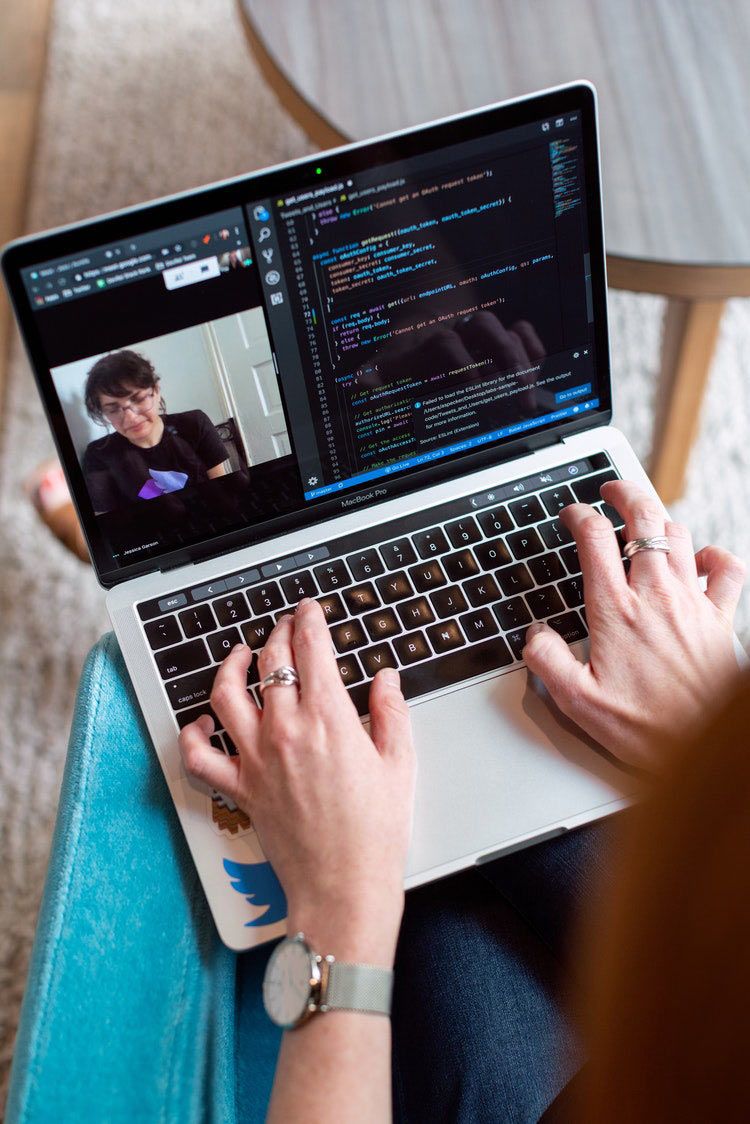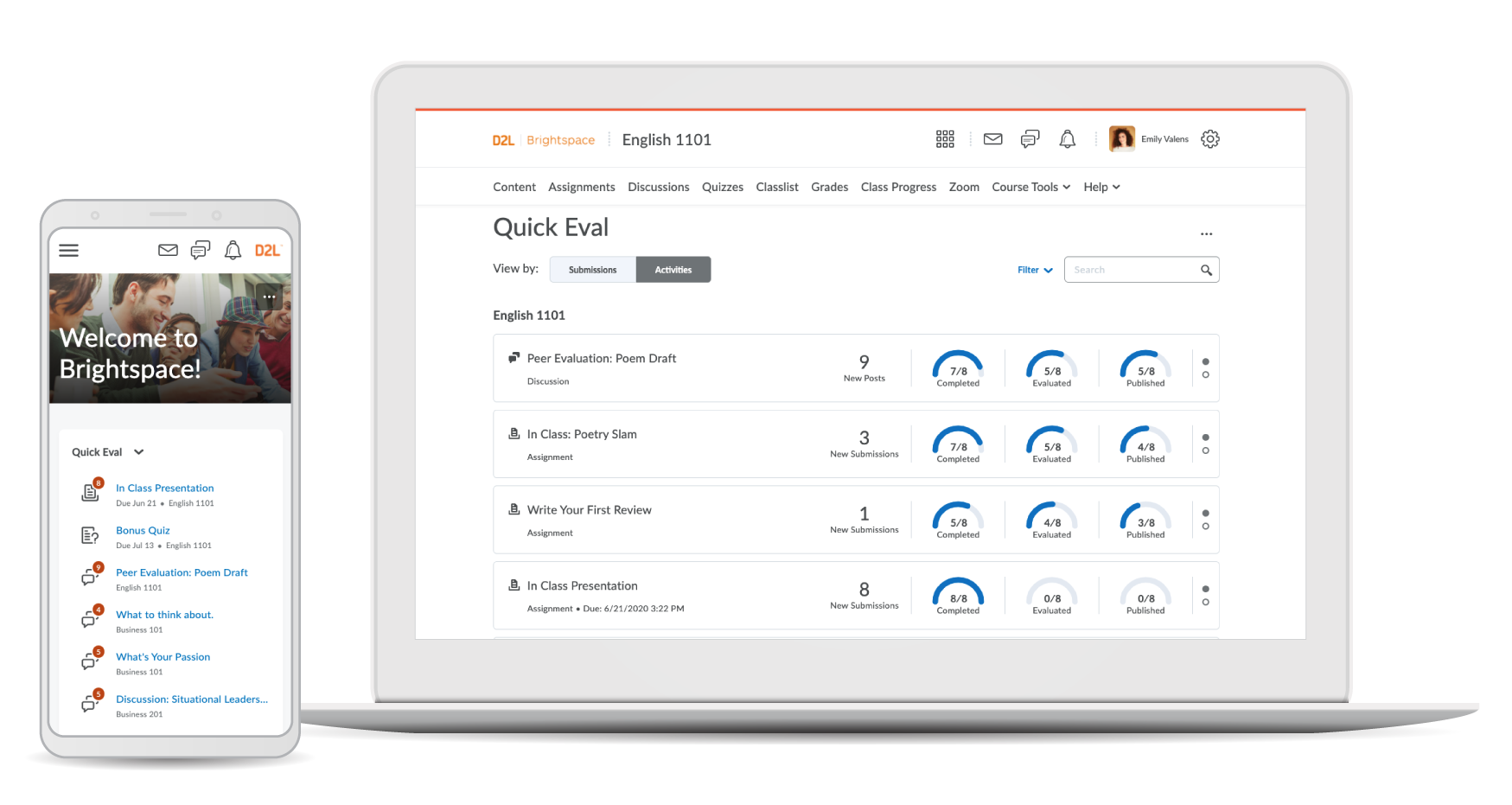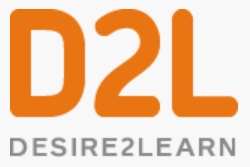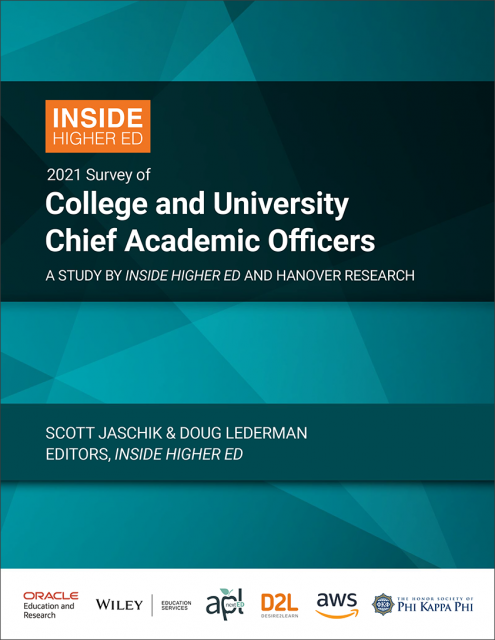Five ways to support faculty with the transition to hybrid learning
As demands for even part-time online learning continue post-pandemic, instructors can use a variety of tools and techniques to increase engagement and success.

For most faculty, students and staff, the abrupt shift from face to face to online instruction in the spring of 2020 was challenging. And while universities made inroads in hybrid learning during the 2020-2021 academic year, a recent Inside Higher Ed survey of provosts found that instruction last fall was either about the same (47%) or even worse (42% somewhat or much worse) than at the start of the pandemic.
Still, an overwhelming majority (74%) of provosts believe campuses will shift to somewhat or significantly more hybrid course offerings, while 73% predict a similar move toward online instruction. University administrators can support faculty in several key areas to improve the quality of existing instruction while helping faculty shift toward a growing number of hybrid and online courses, all while building a more resilient campus.
“More faculty and students than ever before understand the importance of being able to learn anywhere, anytime; whether due to a pandemic or a blizzard or a hurricane or a wildfire or simply to stay home with a sick child,” says Jeff Borden, Chief Academic Officer at D2L. “all college and university stakeholders are seeking learning continuity.”
“Faculty have been looking for solutions to improve engagement with students,” says Howard E. Fooksman, Senior Education Technology Consultant, Teaching and Learning Technologies at Purdue University. “A lot of articles suggest they aren’t aware that students feel disconnected, and I don’t think that’s the case. Almost every faculty member I talk to wants to learn how to improve the learning environment.”
Fooksman and others leading universities through the shift to hybrid learning offer five tips for helping faculty and students navigating the new environment.
2021 survey of College and University Chief Academic Officers
2021 survey of College and University Chief Academic Officers

Training and Technical Support
At Purdue, the Innovative Learning team provides general training for faculty working with learning management systems. However, Fooksman suggests working with department chairs to determine which specific tools they might find useful. “We can match them with training for supported third-party tools that work with D2L Brightspace to meet their needs,” he says.
Texas A&M University—Commerce faculty participate in both online and face to face trainings, explains Brett Murrey, a university Learning Management System Coordinator. “All instructors are enrolled in an online essentials course, where they can learn the LMS and its different components,” including creating assignments, quizzes, and discussion posts. Faculty can also attend one-on-one, in-person trainings in the university’s technical lab.
Developing Engaging Content
Faculty can also utilize a variety of tools to make online courses more engaging. At Purdue, faculty have access to campus green screen studios, where they can record lectures with various multimedia components and post them to D2L Brightspace via Kaltura. The university’s BoilerCast system allows them to broadcast videos live or record in-class lectures. “We can’t fight the faculty desire to do a video lecture,” Fooksman says. “But we can teach them how to make those videos better.”
Some of his team’s best practices include adding “Easter Eggs” for students to find throughout lectures, showcasing PowerPoints behind professors as they speak, varying video styles and adding in-video quizzes. Captioning helps those with disabilities and can also improve comprehension and recall for all students, he says.
Competency-based tools can also aid in student engagement and success, by allowing students to advance more quickly. Texas A&M—Commerce is offering Bachelor’s Degrees in Organizational Leadership and Criminal Justice, Murrey says through this potentially faster track. Students must demonstrate mastery before requesting permission to enter another section from the degree program. “This allows the instructor the ability to reach that student where they are in the process of their learning and help guide them through the next steps,” Murrey says.
Students are coming to [virtual office hours] more frequently than they attended face-to-face office hours.
Improving Communication
Discussion groups and threads are critical to improving communication between students and faculty, and they can occur either live or asynchronously. Texas A&M—Commerce students post written comments, video responses or even recorded phone responses.
Some Purdue faculty offer virtual office hours. “Students are coming to those more frequently than they attended face-to-face office hours,” Fooksman says, noting that some professors are seeing twice the number of students online than in their physical offices. He attributes the popularity in part to a less intimidating atmosphere and the convenience of online meetings.
Murrey notes that many of the components of the D2L Brightspace platform can also help keep faculty informed when students may struggle. If students don’t attend class for a number of days or appear to be struggling with assignments, they receive an email, as do instructors, success and academic coaches and department heads ensuring that students don’t fall through the cracks.
Encouraging Online Collaboration
During the past year, many students attended class from home, often in different time zones, making collaboration more challenging. Discussion group tools can be a lifeline, especially if faculty utilize best practices.
Noting that many students are balancing work, family and academic life, Fooksman suggests taking a survey of each class, allowing faculty to develop groups based on availability. He also notes that disabling the ability to post anonymously encourages more thoughtful, transparent collaboration.
Murrey and his team build discussion boards and lockers for specific groups of students, so they collaborate and share documents. Instructors also make use of zoom breakout rooms for student groups, which faculty can join periodically.
Purdue faculty utilize a tool called “hotseat,” which allows students to have conversations while working on projects. They also utilize a peer review tool, so they can share and evaluate work based on a specific rubric. “Not only are they getting feedback on their work, but it allows students to see a broader variety of examples,” Fooksman says.

Brightspace Core learning management system from D2L
Brightspace Core learning management system from D2L

Developing a Feedback-friendly Culture
Both Murrey and Fooksman noted the desire among faculty to hone their skills, which often requires feedback from students. “One instructor developed several class videos, but his students had trouble finding them and navigating through the course,” Murrey says. His team coached the instructor. “Now he does it on his own, and his students love it,” Murrey says.
Purdue’s Center for Instructional Excellence surveys students and conducts focus groups to gather feedback mid-semester. “We ask them what their pain points are and how things are going, Fooksman says.” That feedback is then anonymized before a team member meets with faculty to help them put it to use. Likewise, faculty build high-quality rubrics to provide actionable feedback for students.
Building a resilient learning environment
By investing in both the tools and the training and development of faculty to use them more effectively, universities are creating an environment that can respond more successfully to the shock of something like the pandemic. “Now all of our instructors are set up in D2L whether they are teaching online or face to face,” Murrey says. “When we had to go online in the spring of 2020 we scrambled to get them up to speed.” Since then, Murrey says they’ve adapted to using learning management software, even for face to face courses. “If something were to happen again, we could transition to hybrid or fully online much faster.”
This content was paid for by D2L and produced by Inside Higher Ed's sponsored content team. The editorial staff of Inside Higher Ed had no role in its preparation.



